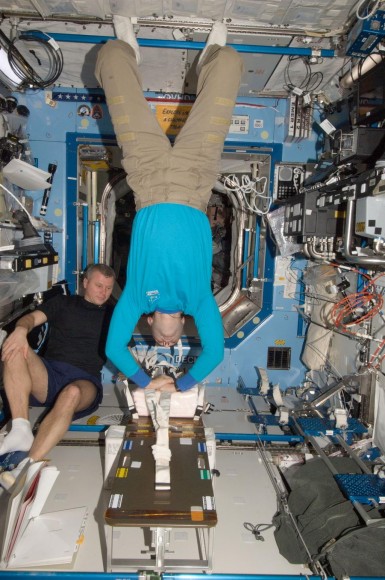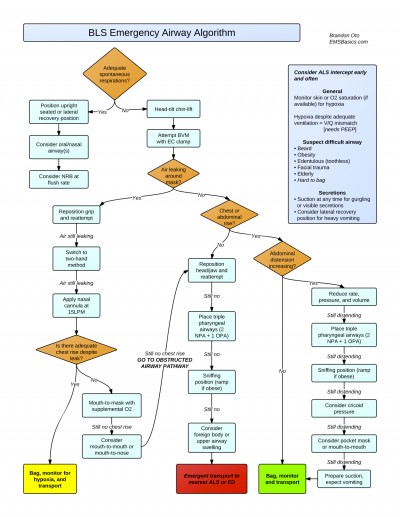I’m tired of all the mumbo-jumbo.
Here’s my beef. Every medical provider, particularly those who work in the acute setting (such as prehospital medicine, critical care, or the emergency department), talks about a concept familiar to us all: the overall, gut sense of how ill a patient appears. In EMS training this is often described as the “general impression,” the “view from the door,” “big sick vs. little sick,” or other euphemisms. It’s your basic opinion of whether a patient is doing okay or not, and it’s formed within the first moments of contact.
Whatever you call it, it’s important. In fact, this one factor is often what really drives your management decisions. If a patient looks truly sick, it may not matter what the vital signs show or how the history sounds; they’re getting zipped over to the hospital with bells on. Conversely, if they look really well, it’s hard to get excited even if they complain of “12 out of 10 pain” and their pulse is 100.
Here’s the rub: everybody acts like this quality is completely impossible to describe. If you tell me the patient “looked sick” and I ask what you mean, you’ll probably wave your hands and reply that it’s ineffable; that you “had to be there”; that you know it when you see it, but that it can’t be quantified and can’t be analyzed.
If true, that would mean it can’t be taught, either. New providers would have to learn to recognize this mystical patient presentation by dint of long, hard-earned experience.
And perhaps this is true. Certainly there are other aspects of patient evaluation and management that actually are too complex to reduce to simplicities. Indeed, one of the central skills of medicine, and one that humans are uniquely equipped to perform (hence the last one that computers will take from us), is our ability to extract a diagnosis from a large number of variables by recognizing subtle patterns.
But I doubt that’s true here. Why? Because you form your general impression within the first moments you meet a patient. There just aren’t very many factors that can come into play, because you haven’t obtained much information yet. The view from the door isn’t going to include ECG findings or subtleties of the OPQRST.
So I have a theory, and here it is. The entire mythical gestalt of your general impression actually involves only three things: the patient’s behavior, their breathing, and the appearance of their skin.
Behavior
The first thing you notice when you meet a person is their behavior. This mostly means two things: their mental status and their level of distress.
A sick patient may be unconscious, or visibly lethargic; healthy people are awake and alert, because the brain is one of the last things the body allows to shut down. They’re also not obviously loopy, such as profoundly confused or combative, unless they have a chronic condition such as dementia.
And if sick people aren’t so sick they can’t complain at all, then their complaints reflect their acuity. They scream, they moan, they are visibly distressed by pain or fear. They say things like they’re dying or can’t breathe or can’t see or can’t move.
Some interpretation is needed here, because appropriate behavior can depend on the circumstances. Malingerers may say they can’t breathe when they clearly can. Panic attacks may present with greater distress than the physiology warrants. A child is most reassuring when grabbing at your stethoscope and stealing your gauze. And an infant may be normal when he cries vigorously and sick when he sits in silence. But it all comes down to how the patient is behaving.
Breathing
The patient’s breathing can be evaluated from across a parking lot. You can’t auscultate or measure their oxygen saturation, but you can get a general idea.
Are they breathing at all? Are they laboring, wheezing, gasping agonally, gurgling through pulmonary edema? Are they chatting easily with the firefighters, or is sucking down air the sole focus of their attention?
Skin
Skin appearance is an idiot-proof and instantly recognizable finding.
The most common sick skins involve pallor and diaphoresis. Shocky or otherwise sympathetically-charged patients are starkly white and sweating like they’re in a sauna. It’s one of the most characteristic appearances of acute illness.
Cyanosis is next up. “Shortness of breath” in a patient who’s pink, warm, and dry is one thing, but it’s quite another when they’re turning blue.
Less common findings include the red-hot skin of fever, the yellow skin of severe jaundice, the dry skin of dehydration, and the dependent lividity of the very dead.
That’s all, folks
When you talk about a patient who looks sick, or “doesn’t feel right,” or has some other nebulous problem like being “toxic,” you’re not tapping into some vast, indescribable vault of clinical judgment. All you’re doing is using shorthand that refers to the patient’s behavior, breathing, and skin. (Notice how these factors are emphasized in our initial assessment.)
A gut belief that a patient has a big problem after a full work-up (including an H&P and diagnostics) is a different phenomenon, and suggests that your intuitive side is recognizing a larger pattern that your conscious self hasn’t yet been able to label. But that’s a distinct process from the instantaneous triage you perform when you first walk into a room.
There may be exceptional cases where something different sets off your alarm bells. But I bet most of the time, it can still be linked back to one of these three categories. (An example might be the frequent flier, well-known to you, who is usually stoic but today seems worried and wants transport. That’s a discrepancy in their behavior, ain’t it?)
Don’t believe me? Just think of how you tell the stories of your sick patients. I’ll bet you say things like, “I walk in, and he’s bent over gasping; his skin is completely soaked and looks whiter than copier paper.” Those are the factors that we recognize as important, and that’s why they’re so vividly evocative. They’re the colors we use to paint the picture of badness.
I may raise some ire by dismissing the voodoo surrounding the clinical gestalt, but here’s my challenge: if you believe there’s more behind your general impression of “sick or not sick,” then reply in the comments and tell me what it is. Maybe I’m missing or forgetting something. Maybe I’m doing it wrong and you’re doing it right. But if you can’t point to what’s missing, then I’m betting there’s nothing more to it after all.



Recent Comments